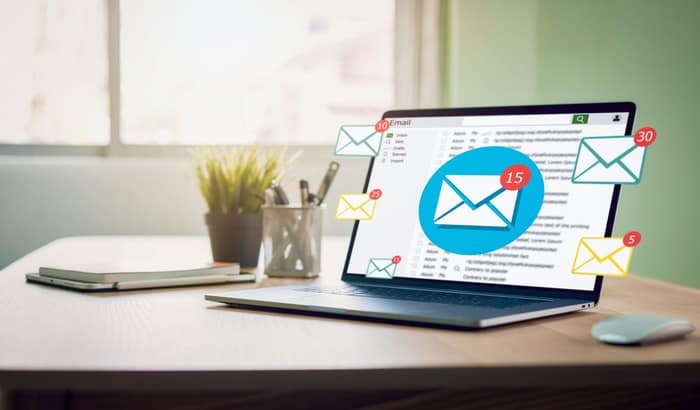Email marketing remains one of the most effective strategies in the digital marketing realm, mainly due to its directness. By sending specific emails to your subscribers, you foster stronger relationships with your clientele. Thanks to technological advancements, the ability to automate various aspects of digital marketing, such as email, is now possible.
Email marketing automation allows you to send tailored emails to your target audience based on predefined programs or triggers. For instance, you can automate sending welcome emails, expressing gratitude to new subscribers for joining your channel. Similarly, feedback emails can be sent after a customer’s purchase or an unfavorable action such as a subscription. This shows your audience that their opinion is valued.
In light of these benefits, this article explores why and how to incorporate automation into your email marketing campaigns.
Why Should You Automate Email Marketing?
Email marketing automation offers numerous benefits to the success of your campaigns. Below are some reasons why you should introduce it to your strategy.
-
It Saves Time And Money
Automation streamlines your workflow, enabling you to send emails to your clients faster and more effectively. You won’t have to worry about recreating emails for every customer or new client you acquire. All you need to do is set your workflow according to your subscribers’ actions.
For example, when they enter their birthdays during sign-up, your system captures this and sends birthday emails when the day arrives. This saves your team from checking upcoming birthdays daily and generating the corresponding messages.
Your team can use their free time to perform other vital tasks in your company that can increase productivity. Also, automation saves you the need to hire more staff for your marketing campaign. You can then channel the saved money to other activities like lead generation.
-
It Eliminates Human Errors
In the realm of marketing, errors can negatively affect your company’s image and customer trust. Given the innate susceptibility of humans to mistakes, entrusting the creation and dispatch of emails to staff can inadvertently increase the risk of errors.
For example, they might accidentally send emails to incorrect recipients or distribute emails laden with spelling and grammatical errors. A powerful method to mitigate such issues is through the introduction of automation into your email marketing strategy.
Email marketing automation ensures the delivery of relevant emails to designated recipients, thereby enhancing customer satisfaction and reducing potential mistakes.
-
It Optimizes Audience Segmentation
Audience segmentation is a marketing strategy that divides your target audience into subsets based on shared interests and purchasing behaviors. By segmenting your audience, you can tailor emails to each group, thereby disseminating relevant information more efficiently.
Email marketing automation tools offer robust capabilities for audience segmentation, enabling you to form subsets based on variables like demographic data, subscription details, and other profile information. This level of granularity not only boosts engagement but also significantly improves conversion and click-through rates.
-
It Facilitates Personalized Email Generation
Customers yearn for more personalized interactions with the brands they favor. Consequently, generic emails may not suffice in persuading them to purchase your offerings. Email automation emerges as a solution to this predicament, as it allows you to generate messages tailored to your audience’s specific interests and preferences based on the information they provide.
This tailored approach ensures your subscribers receive valuable and pertinent emails. The personalized touch incorporated into these emails resonates more with your audience. By doing so, you foster increased engagement with your brand and, in turn, encourage them to invest in your products or services.
How Do You Introduce Automation Into Your Email Marketing Campaign?
Venturing into email marketing automation may initially appear intimidating, but it becomes a manageable and highly beneficial undertaking with the right guidance. Below are some tips for implementing effective automation in your email marketing campaign.
-
Define Your Goals
Before initiating any automation, the first step is clearly defining your goals. This could be improving customer engagement, ramping up your sales conversions, and enhancing your retention rates.
Each of these objectives will necessitate a different set of strategies, tracking metrics, and level of interaction, hence the importance of having them clarified from the onset. This way, you can tailor your automation processes to meet these predefined goals effectively.
-
Choose The Right Automation Software
In email marketing, selecting an appropriate automation software can significantly dictate the success of your campaign. The software should not only fit into your budget but also meet all your marketing needs effectively.
Essential features include automation workflows that provide the ability to set up sequences of emails triggered by specific customer actions and robust analytics that enable tracking the performance of your campaigns.
More importantly, if you’re new to automation, opt for user-friendly software with excellent customer support to make your journey smoother.
-
Segment Your Audience
Segmenting your target audience is a vital step in any email marketing campaign. It involves dividing your email list into smaller, more specific groups based on shared characteristics. For instance, you could create a group of customers based on demographic information like age and location or behavioral data such as purchase history and website activity.
Dispatching custom-tailored and specific emails to every segmented group can notably boost your engagement metrics and the holistic experience of your customers. Over time, this strategy helps you understand your audience better and improves your marketing efforts’ effectiveness.
-
Create Email Automation Workflows
Email automation workflows are sequences of emails that are sent based on predefined triggers. Creating email automation workflows in your marketing strategy can effectively engage your customers, drive conversions, and retain clients through personalized and timely interactions. Here are some common examples:
- Welcome Series: When a new user signs up for your newsletter, you could send them a series of welcome emails that introduce your brand and products.
- Abandoned Cart Reminders: If a customer adds items to their shopping cart but doesn’t complete the purchase, you can send them a reminder email.
- Re-engagement Emails: If a subscriber hasn’t interacted with your emails in a while, you can send them an email to re-engage them.
- Birthday Or Anniversary Emails: Send your subscribers a special offer or message on their birthday or on the anniversary of their joining your email list.
By employing these automated processes, you can significantly improve your marketing efficiency, maintain consistent communication, and deliver tailored content that resonates with your audience.
-
Test And Optimize
Testing and optimization are critical components for success in any marketing endeavor, and email marketing is no exception. Using A/B testing allows you to compare different versions of your emails to see which one performs better. The resulting data lets you understand what strategies resonate best with your audience and use that information to improve future campaigns.
Furthermore, actively monitoring your email analytics is crucial for recognizing the strengths and weaknesses of your campaign. This involves tracking metrics like open rates, click-through rates, conversions, and unsubscribe rates.
-
Stay Compliant With Email Regulations
Compliance with email regulations is not just a legal necessity, but it also builds trust and respect with your audience. Email marketing laws like the CAN-SPAM Act in the United States, CASL in Canada, and GDPR in Europe provide a framework for ethically collecting and using subscriber information.
These laws typically require explicit consent from subscribers before sending them promotional emails, provide an option for subscribers to unsubscribe easily, and prohibit misleading or spam-like practices.
This will not only keep you on the right side of the law but also help you build a strong and trusted relationship with your subscribers, which is crucial for successful email marketing.
Conclusion
Introducing automation into your email marketing campaign can significantly enhance the effectiveness of your marketing efforts. While it may seem challenging at first, the benefits of automating your email marketing make it a worthy investment.
By defining clear goals, choosing the right automation software, segmenting your audience, creating tailored email automation workflows, and focusing on testing and optimization, you can deliver personalized and timely content to your subscribers.
As you venture into this space, remember that it’s a process of continuous learning and adjustment, with each step bringing you closer to an optimized and highly effective email marketing strategy.

